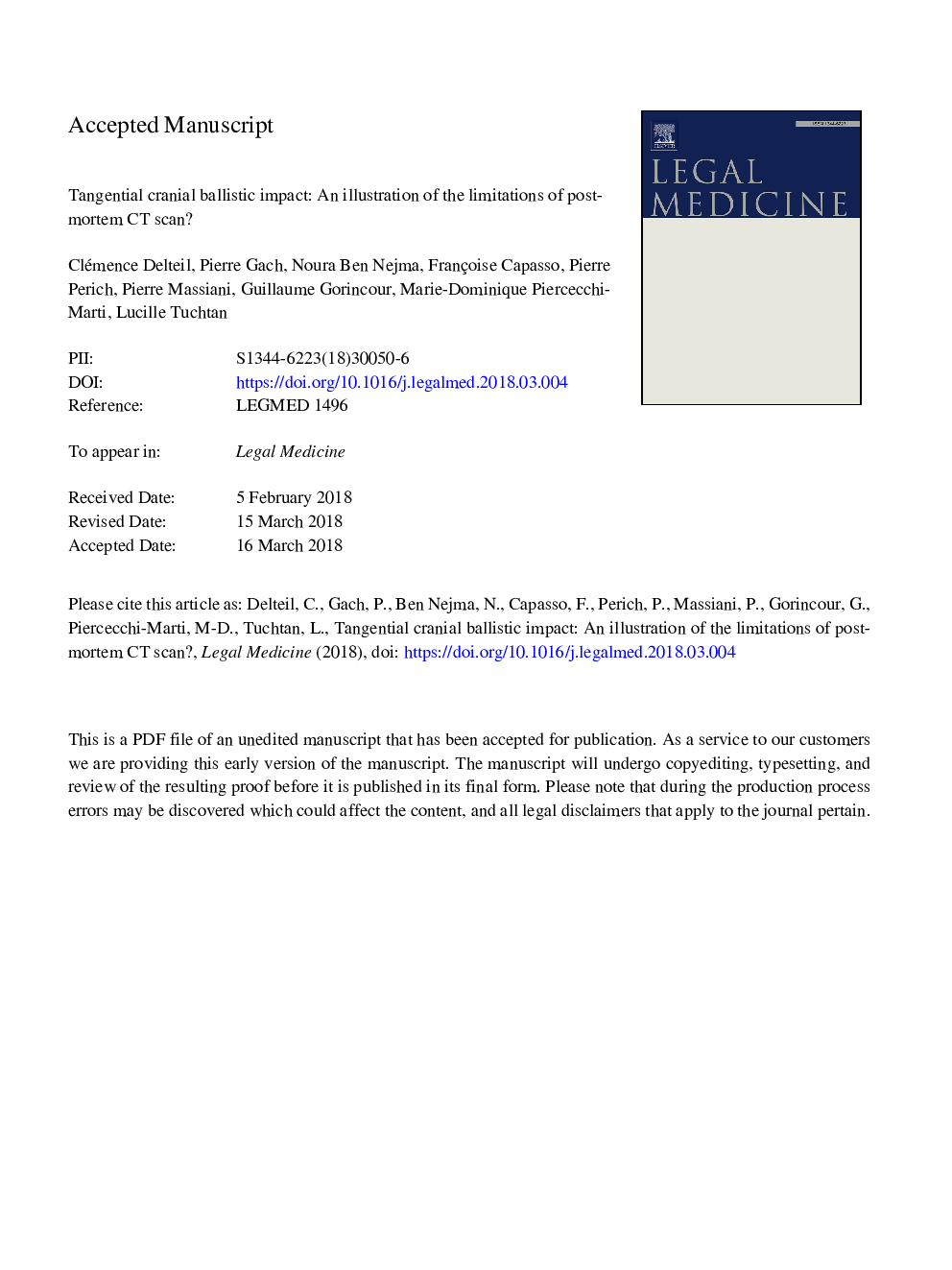| Article ID | Journal | Published Year | Pages | File Type |
|---|---|---|---|---|
| 6555285 | Legal Medicine | 2018 | 21 Pages |
Abstract
Post-mortem imaging has become more frequently used in forensic procedures, notably in a ballistic context. Despite many advances in this field, the interpretation of computed tomography (CT) can be a very complex matter. Our case illustrates the difficulties of interpretation after quasi-tangential cranial ballistic impact and keyhole wounds. These wounds are difficult to visualize on CT and are among the factors complicating the precise determination of ballistics. These sources of error remind us that CT findings must be interpreted in close comparison with autopsy findings.
Related Topics
Physical Sciences and Engineering
Chemistry
Analytical Chemistry
Authors
Clémence Delteil, Pierre Gach, Noura Ben Nejma, Françoise Capasso, Pierre Perich, Pierre Massiani, Guillaume Gorincour, Marie-Dominique Piercecchi-Marti, Lucille Tuchtan,
